Occupational Safety Training in Elevator Installation and Maintenance
99,000 ₫
Note: The above price is calculated for one person and may fluctuate depending on the number of trainees participating in the course and market movements. For more accurate pricing support, please refer to the quotation table or contact our consulting staff directly.
The Elevator Installation and Maintenance Safety Training course is a Group 3 occupational safety course. The course aims to raise awareness among trainees on how to prevent work-related accidents during their work. Accordingly, the occupational safety training content is strictly aligned with Article 18 Decree 44/2016/ND-CP.
Table of Contents
Toggle1. Overview of Elevators
a. What is an elevator?
- An elevator is a mobile device used to transport people or goods up and down between floors of a building or a high-rise apartment complex. Elevators are designed to save people’s time and effort in moving between the floors of a building.
- A typical elevator includes a cabin (or elevator car), cabin doors and floor doors for entry and exit, a control unit to control the elevator, a system of ropes and cables, and a motor to move the elevator up and down. The floors of the building are connected to the cabin through the doors. Elevators can be controlled manually or by a computer, depending on the design of each type of elevator.

b. Typical enterprises in the elevator installation and repair industry
Typical enterprises in the elevator installation and repair industry in Vietnam include:
- Thyssenkrupp Elevator Vietnam: is a company with 100% investment capital from Thyssenkrupp Elevator AG Group (Germany), operating in the field of providing intelligent mobility solutions, including elevators, escalators, moving walks, and control systems. The company is headquartered in Ho Chi Minh City and has representative offices in Ha Noi, Da Nang, Hai Phong, and Can Tho.
- Schindler Vietnam: is a subsidiary of Schindler Group (Switzerland), operating in the field of manufacturing and supplying elevator products, escalators, and moving walks. The company is headquartered in Ho Chi Minh City and has branches in Ha Noi, Da Nang, and Hai Phong.
- Mitsubishi Electric Vietnam: is a company with 100% investment capital from Mitsubishi Electric Group (Japan), operating in the field of manufacturing, installation, and repair of elevators, escalators, and moving walks. The company is headquartered in Ho Chi Minh City and has representative offices in Ha Noi, Da Nang, Hai Phong, Nha Trang, and Can Tho.
- Kone Vietnam: is a subsidiary of Kone Group (Finland), operating in the field of manufacturing and supplying elevator products, escalators, and moving walks. The company is headquartered in Ho Chi Minh City and has representative offices in Ha Noi, Da Nang, and Hai Phong.
- Hitachi Elevator Vietnam: is a subsidiary of Hitachi Group (Japan), operating in the field of manufacturing and supplying elevator products, escalators, and moving walks. The company is headquartered in Ho Chi Minh City and has representative offices in Ha Noi and Da Nang.
- Otis Vietnam: is a subsidiary of Otis Group (USA), operating in the field of manufacturing and supplying elevator products, escalators, and moving walks. The company is headquartered in Ho Chi Minh City.

c. Specific tasks when installing and repairing elevators
Specific tasks when installing and repairing elevators include:
- Elevator design: This is the first step in elevator installation, including calculating and designing the components of the elevator such as the cabin, doors, control unit, motor, suspension system, and other details.
- Elevator installation: After the design is completed, experts will proceed with the elevator installation, including cutting, grinding, and welding elevator components, assembling the cabin, doors, and electronic equipment.
- Inspection and operation: When the elevator is installed, experts will check the components to ensure safe and efficient operation. Then, the elevator is test-operated to ensure normal operation.
- Repair and maintenance: Elevator repair and maintenance are performed regularly to ensure the safe and efficient operation of the elevator. Experts will inspect, clean, and replace necessary parts for the elevator to work properly.
- Upgrading and replacement: When an elevator has been in operation for a long time, the components may be damaged or older and need to be upgraded or replaced. Experts will carry out these activities to ensure the elevator operates well for a long time.

2. Overview of the labor safety training course for elevator installation and repair
a. What is labor safety training for elevator installation and repair?
- Labor safety training for elevator installation and repair consists of learning sessions to equip workers with awareness on how to prevent labor accidents. Accordingly, those who work on elevator installation and repair belong to Group 3.
- The labor safety training course will help workers recognize and prevent dangers, and limit the risks of labor accidents during work.
REGISTER FOR LABOR SAFETY TRAINING SERVICE
b. Training duration
Initial safety training duration
- The total training duration is at least 24 hours, including inspection time.
- 8 hours of theoretical study on the system of policies and laws on labor safety and hygiene
- 8 hours of theoretical study on basic knowledge of labor safety and hygiene
- 4 hours of theoretical study on specialized training content
- 2 hours of practical study on specialized training content
- 2 hours of theoretical testing at the end of the training course
The safety training center will divide the time into many training sessions depending on the time arrangement for employees. But usually, there will be 6 training sessions, the course will take place over 3 days, provided that the manufacturing company can arrange continuous study time.
Periodic safety training duration
- Before the labor safety card expires, if the employee wants to be reissued, they must go through a periodic labor safety training course, with the periodic safety training duration being at least 50% of the initial safety training duration.
Explanation: The total periodic labor safety training duration is at least 12 hours, including inspection time. After completing the periodic training course and passing the required test, the employee will be reissued and have their labor safety card renewed.
c. Content of the training course
| STT | TRAINING CONTENT | TRAINING DURATION (HOURS) | |||
| Total number | Of which | ||||
| Theory | Practice | Inspection | |||
| I | System of policies and laws on labor safety and hygiene | 8 | 8 | 0 | 0 |
| 1 | Overview of the system of legal normative documents on labor safety and hygiene. | 6 | 6 | ||
| 2 | System of technical standards and regulations on labor safety and hygiene. | 1 | 1 | ||
| 3 | Specific regulations of state management agencies on labor safety and hygiene when newly building, expanding, or renovating works, facilities for manufacturing, using, preserving, storing, and inspecting machinery, equipment, materials, and substances with strict requirements on labor safety and hygiene. | 1 | 1 | ||
| II | Basic knowledge of labor safety and hygiene | 8 | 8 | 0 | 0 |
| 1 | Basic knowledge of dangerous and harmful factors at the workplace. | 4 | 4 | ||
| 2 | Methods to improve working conditions. | 1 | 1 | ||
| 3 | Safety culture in manufacturing and business. | 1 | 1 | ||
| 4 | Rights and obligations of the employer, the employee; policies and regimes on labor safety and hygiene for employees; functions and duties of the network of safety and hygiene staff. | 1 | 1 | ||
| 5 | Labor safety and hygiene regulations, safety and hygiene signs, and instructions for using safety equipment, personal protective equipment; professional skills and first aid skills for labor accidents, prevention of occupational diseases. | 1 | 1 | ||
| III | Specialized training content | 6 | 4 | 2 | 0 |
| General knowledge about types of machinery, equipment, and substances that generate dangerous and harmful factors; analysis, assessment, management of risks regarding labor safety and hygiene, and safe work procedures with machinery, equipment, and substances with strict requirements on labor safety and hygiene. | 6 | 4 | 2 | ||
| IV | Inspection of safety training content at the end of the training course | 2 | 2 | 0 | 0 |
| Total | 24 | 22 | 2 | ||
See more training content for 6 groups
d. Labor safety card
After completing the labor safety training course and passing the test, the employee will be granted a labor safety card (in practice, it is often called a labor safety certificate for Group 3).
In which, the Group 3 safety card will clearly show information such as: full name, date of birth, specific job and working environment. It also includes the training duration, a red seal, and a signature confirming the completion of the training course.
According to the regulations for issuing safety cards specified in Clause 2 Article 24 of Decree 44/2016/ND-CP, there are 2 cases:
- In the case where the employer and the employee have a labor contract, the employer must sign, seal, and inter-seal the safety card for the person being trained in Group 3 after they have completed the training course from the labor safety training unit and passed the test.
- In the case of freelance or seasonal workers who do not have a labor contract, the training unit must sign, seal, and inter-seal the safety card for the employee after they have completed the training course from the labor safety training unit and passed the test.

3. Recognizing the dangers of elevator installation and repair
Elevator installation and repair can hide many potential dangers such as:
- If the elevator is not installed or repaired correctly, it can free fall when operating, causing serious accidents for those using the elevator.
- When elevator parts such as sensors, motors, and braking systems do not work correctly, elevator users can get trapped or face other dangers.
- High voltage in the elevator system can cause electrical short circuits, posing a danger to people using the elevator or those installing and repairing the elevator.
- When the elevator suddenly stops or malfunctions, users may be hit by elevator parts or fall.
- The elevator can malfunction due to many different reasons such as machine failure, cable breaks, or control software damage, posing a danger to users.
- Elevator parts can catch fire or explode if not regularly maintained and cleaned, posing a danger to users and the surrounding environment.
Therefore, elevator installation, repair, and maintenance need to be carried out by people with sufficient experience and expertise to ensure the safety of users and the surrounding environment.
4. Safety measures when installing and repairing elevators
Safety measures when installing and repairing elevators include:
- Using personal protective equipment such as helmets, safety shoes, masks, protective gloves, safety glasses, etc. to ensure the safety of the person performing the work.
- Regularly checking and maintaining elevator parts such as the braking system, cables, drive unit, electrical system, etc. to ensure safety during operation.
- Ensuring that electrical, mechanical, and chemical lines do not touch each other and ensuring there are no collisions during the repair process.
- Performing the work according to the correct procedures, technical instructions, and manufacturer’s instructions to ensure the quality and safety of the elevator.
- Adjusting the elevator’s speed appropriately to ensure user safety.
- Ensuring there are no people or objects in the elevator when performing installation or repair work.
- Supervising the work and ensuring the safety of the repair person and those around them.
- Ensuring user safety by placing signs correctly, far away, and clearly.
- Using safety equipment such as alarms, warning lights, etc. to ensure user safety.
- Updating the latest regulations, procedures, and techniques to ensure safety and efficiency in elevator installation and repair work.
- Labor safety training: Training workers on safe working measures will help reduce labor accidents and enable workers to know how to protect themselves.
- Periodically organize labor environment monitoring in factories and enterprises, collect and analyze harmful factors for workers, and then adjust to reduce the level of harm to prevent occupational diseases for them.

5. Types of accidents when installing and repairing elevators
Types of accidents when installing and repairing elevators can include:
- Moving elevator accident: This is one of the most serious accidents related to elevators. If the elevator is not regularly maintained and repaired, it can cause various dangers, including a moving elevator accident. This accident can occur due to technical errors, such as a malfunctioning speed reduction device or a malfunctioning sensor.
- Elevator door opening accident: This is another common accident related to elevators. If the elevator door is not closed tightly or is damaged, it can cause an accident for the elevator user. The elevator user can get trapped or fall out of the elevator.
- Accidents when repairing elevators: Elevator technicians can be in danger if they do not comply with safety procedures when working on the elevator. Dangers can include the risk of being trapped, falling, or electric shock.
- Accidents related to elevator maintenance: If not maintained regularly, elevator parts can break or lose performance. This can cause accidents and dangers for elevator users.
6. Benefits of labor safety training for elevator installation and repair
An Toan Nam Viet provides your business with great benefits after completing labor safety training courses as stipulated in Decree 44/2016/ND – CP on labor safety and hygiene work for companies, factories, and businesses.
- Employees can recognize the potential risks of labor accidents and have preventive measures to avoid labor accidents.
- Your business can establish risk prevention measures in the manufacturing, operation, and maintenance processes.
- Minimize costs when there is a risk of labor insecurity.
- The uninterrupted manufacturing process will help increase labor productivity and product quality.
- Comply with labor safety laws, avoiding legal risks.
- Create a reputation and professionalism in all aspects, thereby enhancing your business’s brand.
Nam Viet’s training courses are a solution to prevent and combat external factors affecting each individual so that they can avoid dangers that can lead to injury or, more seriously, death.
REGISTER FOR LABOR SAFETY TRAINING SERVICE
7. Customer feedback after completing the training course
An Toan Nam Viet has many years of experience in the mission of accompanying many businesses in Vietnam in general and in the southern provinces in particular. And that responsibility to Nam Viet is something extremely valuable, which is why Nam Viet’s Labor Safety Training work is always focused on becoming more and more professional. And the motivation for An Toan Nam Viet to grow strongly to this day comes from the positive feedback and suggestions from the businesses. Below is the feedback from our valued partners whom we have served.
Bac Nam E&C Investment and Construction Joint Stock Company
“The first time I used the service at An Toan Nam Viet, I was very surprised by the enthusiastic 24/7 support of the team of consultants. The class organization was very quick and convenient for our company, thank you very much for Nam Viet’s service!”
Hoa Dat Construction and Trading Joint Stock Company
“Nam Viet’s service has helped us a lot in simplifying labor safety and completing safety records for the work process. The team of consultants is enthusiastic and timely in answering our questions. 5 stars for Nam Viet”
See more customer interviews after using An Toan Nam Viet’s service
8. Labor Safety Training Competence of An Toan Nam Viet
An Toan Nam Viet is a reputable and high-quality labor safety training center in Vietnam today. With labor safety training sessions taking place continuously at manufacturing workshops, factories, or construction sites across the country (63 provinces and cities in Vietnam).
REGISTER FOR LABOR SAFETY TRAINING SERVICE
Labor safety training license
- An Toan Nam Viet has been inspected and granted a certificate of eligibility to operate labor safety and hygiene training by the Department of Labor Safety under the Ministry of Labor – Invalids and Social Affairs. This further strengthens our labor safety training capacity.

Documents and lectures
- Before labor safety training documents are put into the labor safety training courses, they are reviewed and censored to ensure that the lectures are always correct in terms of knowledge and effective when applied.
- The teaching method of the lecturers is synchronized according to the teaching standards of An Toan Nam Viet, which is a method that experts in labor safety and hygiene training have researched and concluded during the teaching process to bring the highest knowledge absorption efficiency to students.
Facilities
- Controlling the factors in the classroom that affect the training process will increase the teaching performance and the knowledge absorption efficiency of students.
- Our facilities supporting the training course always arrange a spacious classroom that meets standards for area, lighting, training equipment, etc.
9. Reputable and high-quality safety training center nationwide
At An Toan Nam Viet, we always prioritize our professional dedication to labor safety training. For us, conveying knowledge of self-protection to workers so that they have a safe foundation on their livelihood path is contributing to the development of the country.
To ensure effective training, we prepare every little detail carefully and meticulously, no matter how small. From preparing tools, equipment, teaching devices to textbooks, documents, sound, and lighting.
Our labor safety training lecturers are experts with many years of experience in the field. They even have research works on identifying hazards in all occupations and how to prevent them.
The lecturers’ lectures are summarized from practical experience and conveyed in a vivid and easy-to-visualize way to the workers. These factors help workers feel comfortable during the learning time and absorb our teaching knowledge well. Of course, the knowledge conveyed always adheres to Decree 44/2016/ND-CP.
From there, they grasp many measures to prevent dangers and how to protect themselves. At the same time, they also apply it in the most appropriate way in their actual work.
Our safety training center is proud to be a provider of reputable and professional labor safety training services with the following advantages:
- Competitive training costs but guaranteed training quality.
- Flexible training schedule to suit the production situation of the company.
- Fast procedures for issuing labor safety training certificates, in compliance with the Law.
- Training lecturers are people with many years of experience in the profession.
- The classroom is controlled for factors affecting the training process, which increases teaching performance and the knowledge absorption efficiency of students.
- The lectures are compiled to be suitable for labor safety work at businesses.
- An Toan Nam Viet works with dedication and professionalism to support customers accurately and quickly.

10. Refer to more labor safety training documents for elevator installation and repair
- Labor safety training documents for elevator maintenance
- Set of labor safety training documents
- Labor safety training test questions
11. Labor safety training activities
1 review for Occupational Safety Training in Elevator Installation and Maintenance
No comments yet

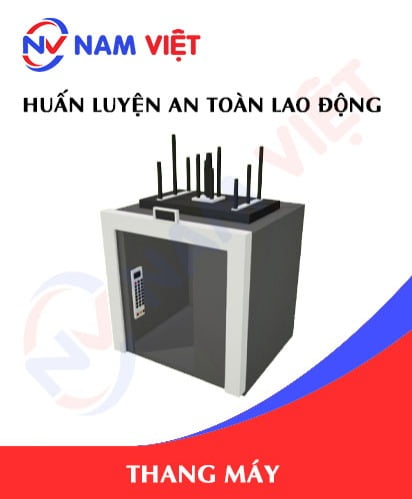
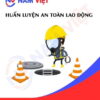
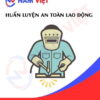




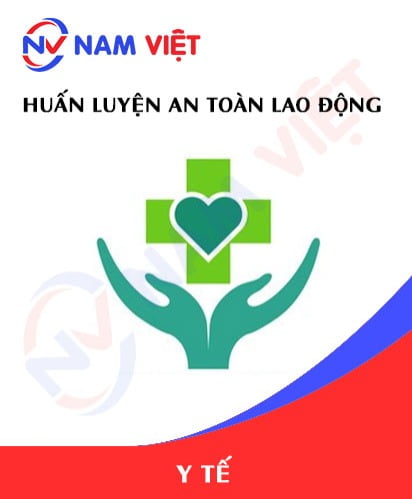
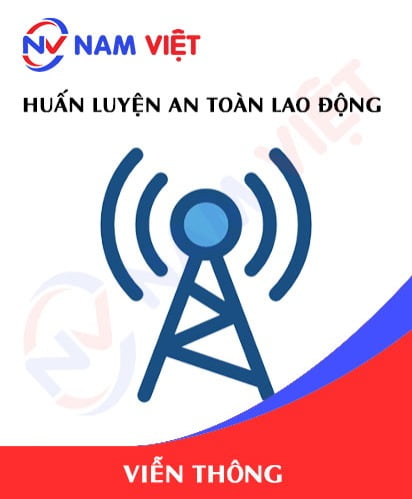

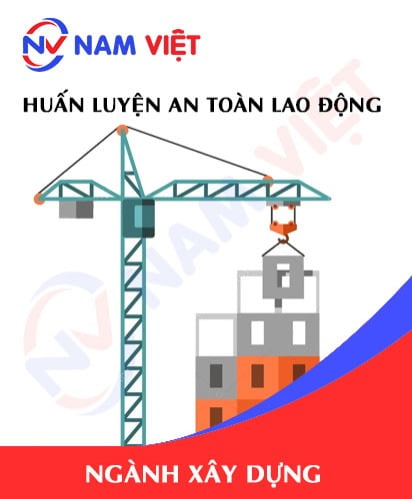
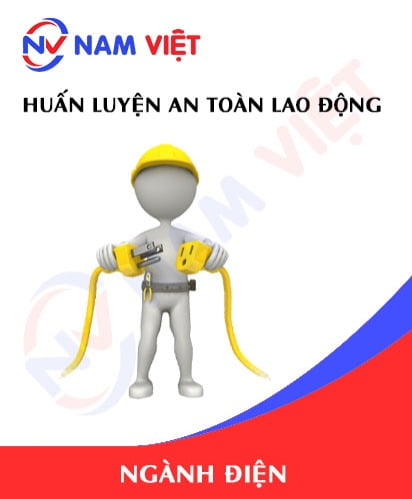

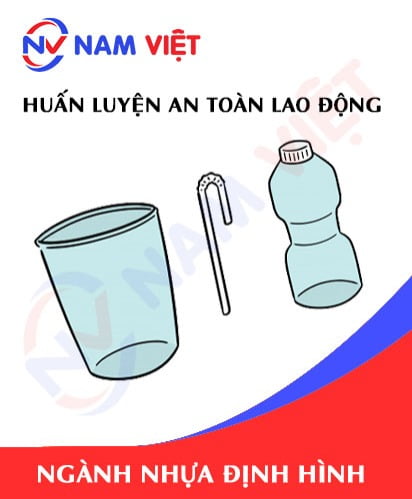
caotiensyhung.07081999
Dịch vụ huấn luyện an toàn lao động rất tốt nhé, giảng viên dạy rất sinh động dễ hiểu!